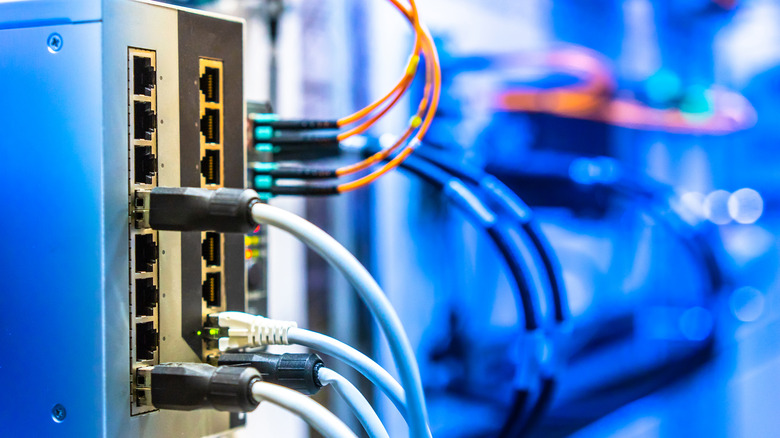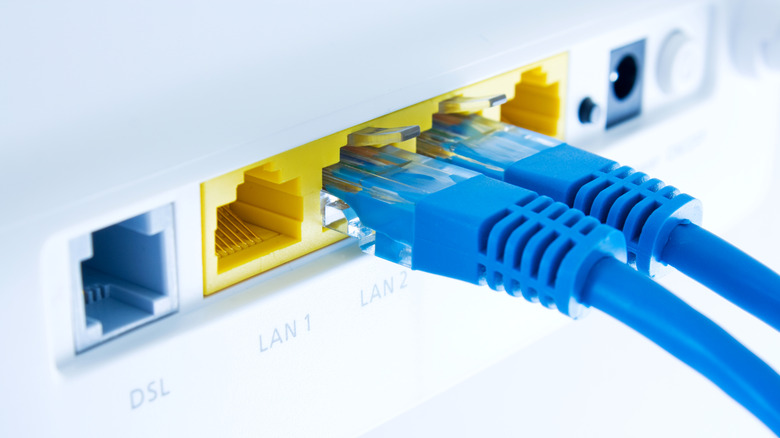Internet Port Scanning Explained: What It Is, And How It Works
To most, the term "internet port scanning" might sound like the kind of nonsensical technobabble you would hear on an episode of "NCIS." However, port scanning is a very real and widely used method, both by cybersecurity professionals and, unfortunately, by those seeking to exploit a network's vulnerabilities. At its core, port scanning is a reconnaissance technique that allows individuals to probe and map the digital landscape of computer networks. Imagine it as a digital mapmaker surveying the terrain of a network, marking access points, and highlighting potential weak spots. While it may sound sinister, port scanning serves essential functions in both defensive and offensive cybersecurity strategies.
In an era where life is increasingly intertwined with the digital domain, understanding the basics of port scanning can be important. From the devices in your pockets to the critical infrastructure that powers cities, almost everything is connected to the internet. This interconnectivity brings unparalleled convenience, but also enables many potential threats.
Whether you're an IT professional safeguarding corporate networks or an individual navigating the digital landscape, understanding the nuances of port scanning is a crucial step toward securing the ever-expanding frontiers of the online world.
What is a port?
To understand internet port scanning, it's essential to start with the concept of a "port" in the context of computer networking. Imagine your computer or any networked device as a city, with various services and applications representing different districts. Each district, or service, has its designated entry point — a port.
In networking terms, a port is a number associated with a specific process or service running on a device. These ports range from 0 to 65535, creating a vast range of potential access points for data to flow in and out of a system. Put simply, ports act as communication endpoints, allowing different applications to send and receive data.
The Internet relies on a standardized system called the Internet Protocol (IP) to facilitate communication between devices. When you connect to a website, send an email, or engage in any online activity, data travels through these ports to reach its destination. Each port is like a door, and understanding whether these doors are open or closed is at the heart of port scanning.
Ports are categorized into three main types: well-known ports (0-1023), registered ports (1024-49151), and dynamic or private ports (49152-65535). Well-known ports are reserved for widely used services, such as HTTP (port 80) for web traffic or FTP (port 21) for file transfers. Registered ports are designated for specific applications, while dynamic ports are used for temporary connections.
What is port scanning?
Still imagining ports as doors, you can envision port scanning as a meticulous survey of these doors — a systematic attempt to discover which ones are accessible and potentially vulnerable. This process is akin to a locksmith testing different keys to determine which ones fit a particular lock. While legitimate security professionals use port scanning to identify and address vulnerabilities, cybercriminals may exploit open ports as entry points for unauthorized access.
When scanning ports, a distinction is made between open, closed, and filtered ports. An open port indicates that a service is actively accepting connections, providing an entry point for data. Conversely, a closed port means that no service is actively listening on that port. A filtered port, however, raises a red flag — it suggests that a firewall or other security measure is in place, obstructing the scanning attempt. Understanding these distinctions is crucial not only for cybersecurity professionals seeking to fortify networks, but also for individuals who wish to safeguard their digital assets.
Port scanning, in essence, is a reconnaissance method that involves systematically probing a target system for open ports. It's akin to a digital explorer mapping the landscape of a foreign city, seeking entry points and vulnerabilities. The motivations behind port scanning can vary, from security audits and network troubleshooting to more sinister activities such as unauthorized access and exploitation.
At the most basic level, a port scan involves sending a series of carefully crafted messages to the target device, each designed to elicit a specific response. The scanner observes these responses to determine the status of the targeted ports. While this may sound like a straightforward process, the complexity lies in the variety of scanning techniques and the ever-evolving methods employed by both security professionals and attackers.
Port scan attacks
While port scanning itself is a legitimate and often necessary practice for cybersecurity professionals, its malevolent counterpart is wielded by malicious actors seeking to exploit vulnerabilities and breach digital fortifications.
A port scan attack is an intrusive and potentially harmful attempt to discover open ports on a target system with the intent of identifying weaknesses and vulnerabilities. In the hands of cybercriminals, a successful port scan can pave the way for unauthorized access, data exfiltration, and other malicious activities.
The primary danger associated with port scan attacks lies in their nature as a precursor to more sophisticated assaults. Cyber attackers often employ port scanning as the initial step in their reconnaissance phase, aiming to create a comprehensive map of the target's network architecture. Armed with this information, they can then exploit vulnerabilities in specific services or applications running on the open ports.
One of the most potentially dangerous parts of port scan attacks is their potential to go unnoticed. Unlike overt attacks that may trigger any number of alerts, a well-executed port scan can fly under the radar, making it challenging for a system administrator and their team to detect the reconnaissance in progress. This stealthy approach allows attackers to gather crucial intelligence about a system's weaknesses without alerting the target network to their presence.
Understanding the motivation behind port scan attacks is crucial to fortifying your digital defenses. Cybercriminals may employ these techniques for various purposes, including gaining unauthorized access to sensitive information, launching distributed denial-of-service (DDoS) attacks, or exploiting vulnerabilities for financial gain.
Should you be concerned about port scan attacks?
When learning about a potential digital exploit you could face, it's only natural to wonder if it is something you need to worry about. The answer, like so many other things in life, is nuanced and dependent on your own activities.
For the everyday user who checks emails and social media, and perhaps engages in online shopping, the immediate worry about port scan attacks may seem distant. The reality, however, is that cybersecurity is a collective responsibility, and awareness is the first line of defense. While the average person may not be a prime target for sophisticated port scan attacks, being mindful of basic security practices remains paramount.
It's crucial to recognize that port scans are not necessarily directed at individuals but rather at systems and networks. Cybercriminals typically target organizations, businesses, and institutions where valuable data is stored. As a result, individuals might fall victim to the consequences of a broader attack, such as compromised personal information or disruptions to the online services they use.
However, certain individuals and entities are inherently more susceptible to the direct impact of port scan attacks. Businesses, organizations — really, any entity that stores sensitive data, financial information, or intellectual property is a prime target. A successful port scan can be a precursor to more significant breaches, potentially leading to data theft, ransomware attacks, or service disruptions.
While the average person may not be the primary target of port scan attacks, the interconnected nature of the internet means that everyone plays a role in the broader cybersecurity ecosystem. Practicing good digital hygiene, such as keeping software updated, using strong and unique passwords, and being cautious about clicking on suspicious links, contributes to a more secure online environment.
Tools and techniques
Now with the knowledge of what ports are, what a port scan is, and what a port scan attack does, it's time to get down to the tools and techniques used by cybersecurity analysts and attackers when port scanning. First and foremost, it's important to understand the different types of scans.
A TCP connect scan involves attempting to establish a full three-way handshake connection with the target by initiating a connection request and waiting for a response. This method is more conspicuous and may be logged by intrusion detection systems. In contrast, an SYN scan operates by sending a series of TCP SYN packets to the target ports without completing the full handshake, aiming to identify open ports based on the response behavior. SYN scans are stealthier than TCP connect scans, as they minimize the likelihood of detection.
On the other hand, UDP scans focus on the User Datagram Protocol, which is connectionless and lacks the built-in acknowledgment mechanism of TCP. UDP scans involve sending UDP packets to target ports, observing whether the port responds, and inferring the port's state based on the response or lack thereof. Each scanning method serves distinct purposes, with TCP connect scans providing reliability, SYN scans emphasizing stealth, and UDP scans addressing non-TCP protocols.
Understanding these scan types, there are tons of tools out there that enable these different kinds of scans. Tools such as Nmap, Zenmap, Masscan, Wireshark, and Metasploit all enable port-scanning techniques. Understanding these tools provides insights into the arsenal available to cyber-attackers. However, it's crucial to note that the responsible use of these tools is vital for ethical hacking, security testing, and network defense. Security professionals leverage these tools to identify and remediate vulnerabilities, while attackers misuse them for unauthorized access and malicious activities.
How to detect a port scan attack
While the stealthy nature of these reconnaissance activities can make them challenging to identify, there are several telltale signs and techniques that security professionals employ to keep an eye out for potential port scans.
Port scans often generate atypical patterns in network traffic. Unusually high connection requests to various ports within a short time may indicate a scanning attempt. Security monitoring systems such as intrusion detection systems (IDS) can flag these anomalies for further investigation. Users can also implement dedicated port scan detection software, such as PortSentry.
Regularly analyzing system and network logs can reveal patterns indicative of a port scan attack. An influx of failed connection attempts or sequential connection requests to multiple ports may raise red flags. Security administrators should pay close attention to these logs for early detection.
Analyzing the protocols used during a scanning attempt can offer clues about the attacker's intentions. For example, an abundance of SYN packets without corresponding ACK responses may indicate a SYN scan, while an influx of UDP packets can signify a UDP scan. Unusual patterns in user behavior, such as multiple login attempts or access requests from a single-user account across various ports, may indicate a compromised system or a malicious insider conducting reconnaissance.
Utilizing anomaly detection tools that baseline normal network behavior can aid in identifying deviations that might indicate a port scan attack. Unusual spikes in traffic or deviations from established baselines trigger alerts for security personnel to investigate. Leveraging threat intelligence feeds enables organizations to stay informed about emerging threats and attack patterns. Integrating this intelligence into detection systems enhances the ability to recognize the signatures and behaviors associated with the latest port scan techniques.
Defending against a port scan attack
While detection provides insights into ongoing reconnaissance, effective defense involves implementing proactive measures to thwart attackers and fortify the virtual ramparts. A well-configured firewall serves as the first line of defense against port scan attacks. Tightening firewall rules to allow only necessary and legitimate traffic while blocking unnecessary ports can significantly reduce the attack surface. Firewalls should also be configured to detect and respond to unusual patterns indicative of scanning activities.
Deploying intrusion detection and prevention systems enhances the system's ability to identify and mitigate port scan attacks in real time. These systems use signature-based detection, anomaly detection, and behavioral analysis to recognize scanning patterns and take proactive measures to block or limit the impact of the attack.
Implementing rate limiting on network devices can help mitigate the impact of port scan attacks. By restricting the number of connection requests from a single source within a specified timeframe, rate limiting hampers the effectiveness of scanning attempts and buys time for defensive measures.
Conducting regular security audits and penetration testing can also help to identify and address vulnerabilities before attackers can exploit them. By simulating real-world attack scenarios, organizations can strengthen their defenses and fortify potential weak points.
Of course, as mentioned earlier, keeping software, operating systems, and network devices up to date is paramount. Attackers often exploit known vulnerabilities. Timely updates and patches close these doors, reducing the likelihood of successful attacks following a successful port scan.
A comprehensive defense strategy involves a combination of technical measures, vigilant monitoring, and proactive risk management. Recognizing that cybersecurity is an ongoing process, rather than a one-time endeavor, is crucial for maintaining resilience in the face of evolving threats.
Prevention
7The best line of defense against port scan attacks is to work to prevent them to begin with. While firewalls can be a great defensive measure, as mentioned above, they are great in the sense of being a preventative measure against port scan attacks. Regularly reviewing and updating firewall rules to adapt to changing network requirements can be crucial in maintaining an effective barrier.
Another solid preventive measure that you can take on a personal level is to reduce the number of open ports within your network. One of the easiest ways you can do this is by reducing the number of devices connected to your network. Everything you have connected to your network corresponds to an open port for that device. Be it an Xbox Series X or a smart light bulb, it uses a port. By finding unnecessary connections and squashing them, you close potential points of entry for malicious actors.
In the realm of prevention, TCP wrappers can add an additional layer of defense. TCP wrappers allow administrators to control access to network services based on the source IP addresses. By defining rules within these files, administrators can permit or deny access to specific services or hosts, providing a fine-grained control mechanism. Leveraging TCP wrappers helps mitigate the impact of port scans by restricting access to potential targets, and enhancing overall network security. This approach complements other prevention strategies and contributes to a comprehensive defense posture against reconnaissance activities.








